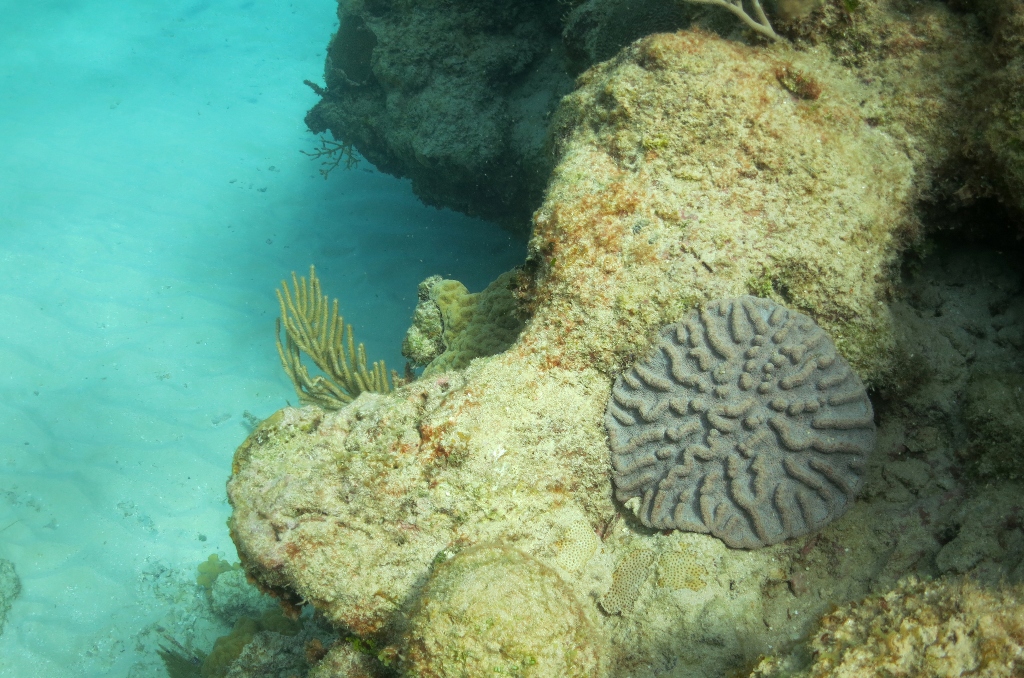A knobby cactus coral. Photo: Tina Sotis/Shutterstock.com
A species of coral reef has been bred in human care for the first time, a breakthrough that scientists in Florida say may help slow the decline of coral reef die-off. The ridged cactus coral reproduced for the first known time in a lab setting at the Florida Aquarium in Tampa. The coral reef in Florida is part of the world’s third-largest coral barrier reef system, or “America’s Great Barrier Reef.”
The species is one of many corals facing widespread destruction off Florida and in the Caribbean due to disease, said senior coral scientist at the aquarium, Keri O’Neil. O’Neil said the hope is that the coral reproduced at the aquarium can one day be reintroduced into the ocean and reproduce to help stave off extinction. Maintaining a diversity of species is important for preserving coral reefs, she also said.
“What makes a coral reef unique – all of these different species have slightly different shapes and growth forms and that is what makes the coral reef so complex,” she said.
A stray coral larva, or “settler,” had landed on a small ceramic tile and morphed into a primary polyp, the start of what might become a full-fledged colony. Corals, despite their appearance, are animals, not plants, with mostly minuscule polyps forming groups that combine in diverse reefs.
The larva was evidence of birth. The birth signified a breakthrough for the small group of scientists devoted to helping coral reproduce under human care. The kind of coral was not yet known at the time.
The settler had not come from the knobby cactus, and the researchers had no idea which of the corals they studied it was. They used bucket-like collectors to trace more larvae to something that looks like a barely-visible rocky brain, in laser-show hues of green, purple and red.
According to Roger Germann, Florida Aquarium’s Chief Executive Officer, the coral reef is battling its own pandemic. “Right now, there’s a lot of challenges, and our goal is to stop that reef from disappearing,” Germann said. “For decades, we have been losing our coral reefs, which marine scientists attribute to over-pollution, overfishing and rising sea temperatures.”
Though coronavirus has kept the Florida Aquarium closed for weeks, scientists have been working around the clock. “They have sleeping bags under their desks – we don’t tell them to do that, but they are so committed to it,” he said. “We’ve put about $2.5 million over the last four years, into our coral program. We’re putting our time, our talent and our treasure in it because that’s why we exist.”
Scientists said the corals first began giving birth in early April. So far, more than 350 coral babies have been released.
How Reproduction Works
Ridged cactus corals are brooding coral (meaning to reproduce) only their sperm (not the eggs) are released into the water. The eggs are then fertilized and the larvae development occurs inside the parent coral.
The parent corals “spit out” the tiny baby coral, which immediately starts swimming around until they find a perfect place on the reef where they stay for the rest of their lives.
About “Project Coral”
About a year ago, the aquarium’s scientists became the first in the world to get Atlantic Ocean coral to successfully reproduce two days in a row for the first time in a lab setting.
The aquarium is also taking part in “Project Coral,” a program designed to spawn coral with the goal of ultimately repopulating the world’s coral reefs. The project works in partnership with London’s Horniman Museum and Gardens to induce corals to spawn, or release their eggs and sperm, in a lab. To learn more about the program, please visit the Project Coral website.
Project Coral uses advanced LED technology and computer-control systems to mimic the natural environment of the coral to subtly signal the corals to reproduce as opposed to how the natural reproduction of the ridged cactus corals works.
As time passes and scientists research these animals, more questions will continue to be answered about how we can continue to rescue and breed corals safely.
Melissa’s career in writing started more than 20 years ago. Today, she lives in South Florida with her husband and two boys.

